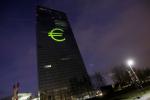
- All Instrument Types
- Indices
- Equities
- ETFs
- Funds
- Commodities
- Currencies
- Crypto
- Bonds
- Certificates
Please try another search

Refocusing your investing strategy in 2023

2022 would have to go down as one of the worst years ever for investment returns. Thanks largely to a pandemic-sparked bear market, fast increasing inflation, and forceful countermeasures from most of the major central banks. The S&P 500 had its worst calendar year since 2008, with the benchmark index dropping more than 5% in December. It was down almost 20% over the course of the year.
Now that 2022 has come to an end, most investors are breathing a sigh of relief. They’re concentrating their attention on the year ahead and which trends will provide the most profitable opportunities for the best possible rate of success. So what can investors anticipate for this year, and what are some possible strategies that might increase the odds of solid returns on the stock markets? Let's take a look.
Where to for 2023?
Concerns about increasing interest rates, decreasing economic growth, and persistently high inflation prompted investors to sell in waves throughout 2022. Tech companies, growth stocks, and cryptocurrencies were especially heavily hit, and many believe that we haven't seen the end of this type of volatility.
Inflation seems to be slowing down around the world for the most part now. However, economists are warning that the major central banks, and especially the Federal Reserve's fight against increasing prices is far from done, and that a recession might loom in the first half of the year as a result.
For this year at least, most economists anticipate that the main western economies will experience mild, though protracted recessions, as seen by a range of warning indicators. The economic strain caused by historically strong central bank rate rises is mounting, and many homeowners and borrowers will be hurting coming into this year with higher bills and less purchasing power.
In the US, expectations for economic growth in 2023 have been lowered even by the Federal Reserve. In December, the FOMC revised its long-term economic estimates, predicting a 0.5% increase in U.S. GDP in 2023, down from a previous expectation of 1.2% growth. The FOMC also predicted that the unemployment rate in the United States would be 4.6% in 2023, up from 3.7% in December's official estimate from the Labor Department.
In Europe, the impact of the energy shock on real earnings is being exacerbated by tighter financial conditions. The sanctions that the West has put on Russia, especially those that target the exports of energy like oil and natural gas, must be watched closely as the situation in Ukraine progresses.
In China, the way in which future instances of COVID-19 are handled since its reopening might have a major influence on the growth of financial markets. If everything goes as planned, the government will continue to reopen the economy and allow citizens to go back to their regular routines. At that point, normal consumption of a wide variety of commodities should also return to normal levels, which might boost growth in the nation and the global economy.
Some considerations for 2023
Go back through your investment goals and make the necessary adjustments
Verify that your portfolio still accurately represents your long term objectives and look at the possible activities that may assist you in achieving them. Could your fees be reduced? Are you considering selling up any holdings that don't make sense to you anymore?
Remain calm if your time horizon for investing is more than five years
Always follow the golden rule and avoid selling your assets out of fear. Any drops in value this year are likely to be a brief blip in the history of your portfolio. Active monitoring of a portfolio is important for navigating the changing tides of financial markets. However, it's also essential for individual investors to manage the behavioral impulses of emotional buying and selling that can come from following the market's ups and downs.
It's all too tempting for investors to get caught up in media excitement or panic, leading them to purchase assets during market peaks and sell during market falls, so make sure you have strategies in place to avoid this.
Diversification is key
Investing in a wide variety of assets usually increases your chances of success. Investments always come with some degree of risk. Therefore, as a prudent investor, you shouldn't place all your capital into a single asset.
A diversified portfolio might include bonds, stocks, commodities, and exchange-traded funds (ETFs) as well as other financial assets and products that will fit your trading strategy like CFD or Contracts For Difference offered by ActivTrades. It’s also important to invest in different parts of the world and in various currencies.
Maintaining diversity in your portfolio is really important, as there's always the risk that another asset class would outperform one and offset the losses incurred by the other. Investing may be a roller coaster ride, but diversification can help you remain on that ride with more consistent results.
Think about keeping some defensive stocks
A defensive stock is one that maintains its dividend and profits level independent of the broader market's performance. Defensive stocks are more consistent throughout the economic cycle because of the constant demand for their goods.
Food and drink, gas and energy, medicine, medical equipment, waste management and water purification are all examples of consumables that are required regardless of economic conditions, which means that they potentially perform better during market downturns or an economic slowdown.
Consider building an Emergency Fund
An emergency fund is a savings cushion earmarked for use in emergencies. Building up a reserve for unexpected costs like medical care or significant home maintenance might help alleviate stress and anxiety about one's financial stability, and give investors more confidence.
The majority of an emergency fund's assets are usually cash or other easily converted assets. This lessens the chances that you'll have to resort to risky forms of borrowing like using credit cards or a payday loan, or compromise your financial future by dipping into your retirement savings.
Final Thought
Wouldn't it be nice to have a crystal ball to show us what to expect for 2023! No matter what happens, those who are better prepared for volatility, the potential for recession conditions, and tighter monetary policy, will be more able to sleep soundly this year.
Related Articles

Using the Elliott Wave Principle (EWP), we have been tracking the most likely path forward for the Nasdaq 100 (NDX). Although there are many ways to navigate the markets and to...

Investors are on edge about what tariff policy means for markets Coming off a strong Q4 earnings season, fresh February corporate sales figures can help assess the macro...

Broadcom stock is in a dynamic rebound phase. Markets seem optimistic ahead of the earnings release. Let's take a deep dive into what to expect from the report. Get the...
Are you sure you want to block %USER_NAME%?
By doing so, you and %USER_NAME% will not be able to see any of each other's Investing.com's posts.
%USER_NAME% was successfully added to your Block List
Since you’ve just unblocked this person, you must wait 48 hours before renewing the block.
I feel that this comment is:
Thank You!
Your report has been sent to our moderators for review





Add a Comment
We encourage you to use comments to engage with users, share your perspective and ask questions of authors and each other. However, in order to maintain the high level of discourse we’ve all come to value and expect, please keep the following criteria in mind:
Perpetrators of spam or abuse will be deleted from the site and prohibited from future registration at Investing.com’s discretion.